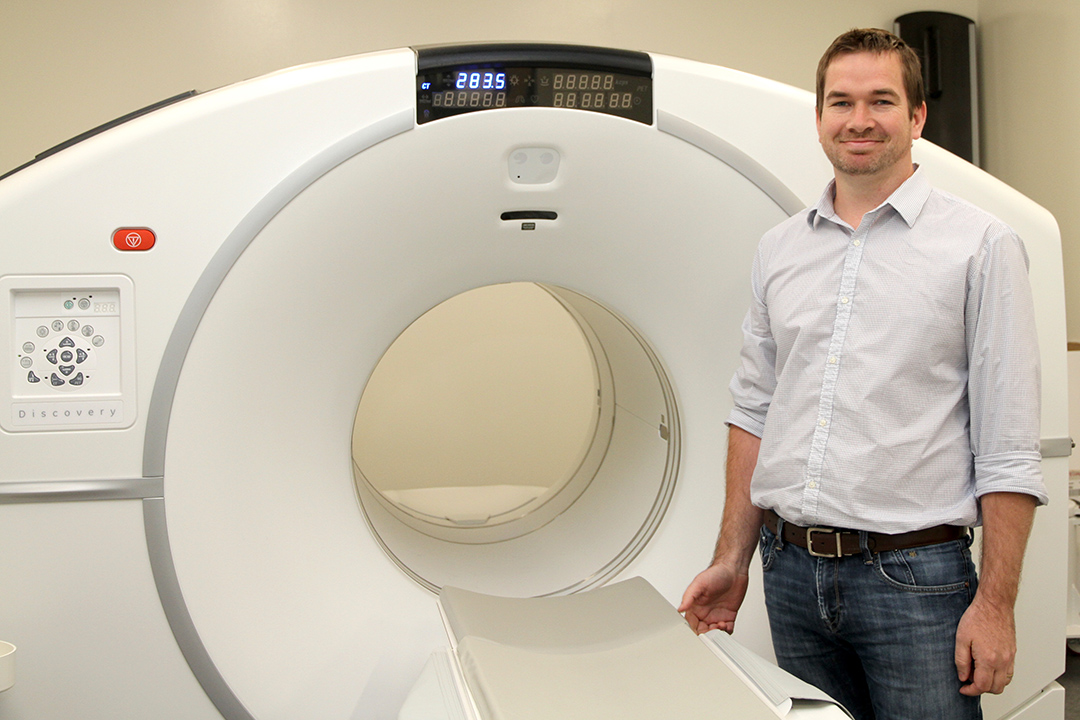
Radiation safety officer offers campus collaboration
For University of Saskatchewan (USask) Radiation Safety Officer Matthew Hutcheson, safety is in the details.
By Ashley DopkoThis was especially true when installing the new positron emission tomography-computed tomography (PET-CT) at the Western College of Veterinary Medicine (WCVM), making it the first veterinary college in Canada with its own PET-CT dedicated to animal diagnostics and research.
When Hutcheson first became involved with the project, he was focused on the design of the new facility, looking at features like the leaded glass and the thickness of walls. However, when the team learned of his unique background in nuclear medicine, his role quickly evolved.
Before coming to the university, Hutcheson worked as a nuclear medicine technologist with the Saskatchewan Health Authority, and then joined the Sylvia Fedoruk Canadian Centre for Nuclear Innovation at USask as a cyclotron production technologist, producing some of the medical isotopes that are used for diagnostic research right on campus. This combined experience put Hutcheson in a unique position to go above and beyond with the installation of the PET-CT.
“This was a really exciting project to be a part of,” said Hutcheson. “My role as radiation safety officer is more administrative, but with something like this I could still get my hands in there. The more hands-on assistance I can provide, the better advice I can give. Working closely on a project like this gave me an even better understanding of safety concerns and it allows us to work together to find innovative solutions.”
The PET-CT not only allows veterinarians and researchers to see anatomy, as with a standalone CT scan, but also tells them about the processes in the body, including metabolism. This is important when it comes to monitoring cancer (which often has a higher glucose metabolism), and that’s where the radioactive isotopes come in. Hutcheson was not only able to provide advice on how the safety handle those isotopes, but also on the selection of equipment and with the development of procedures.
“Everyone at WCVM was great,” he said. “They really integrated me into the project and I’m proud to be a part of the team who worked on this.”
When he’s not busy installing major new equipment, Hutcheson spends most of his time reviewing procedures, auditing labs, and helping USask researchers achieve their regulatory requirements.
“The first question I usually get about radiation is, ‘Is it safe?’” said Hutcheson. “The reality is that we’re all exposed to radiation on a regular basis from the natural world around us, and when it comes to radioactive research materials, the protocols we have in place keep the risk very low. It’s more a matter of using best practices to limit unnecessary risk, even if the risk is low. So, a big part of what I do is education. I help staff, faculty and students understand how to work with these materials safely. It’s the collaboration that I like the most, because that’s where we can see if there is anything more we can do, because safety is always in the details.”

